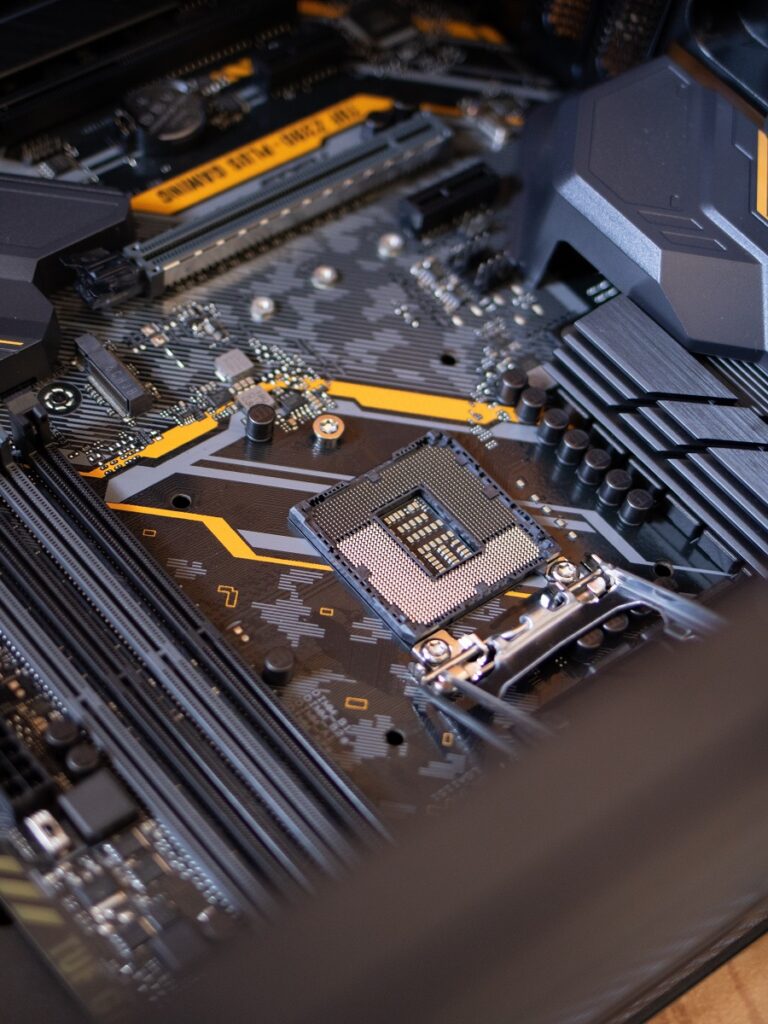Today’s world is heavily reliant on technology, so computer repair services are in high demand. The rise of remote work and learning has resulted in an increase in the demand for computer repair and maintenance services. Starting a home-based computer repair business has many advantages, including low overhead costs, flexibility, and the ability to work from the comfort of your own home.
This comprehensive guide will walk you through the essential steps required to launch a successful home-based computer repair business, including market research, legal and financial considerations, business setup, services offered, marketing and advertising, operations and customer service, and business growth.
Quick Overview
| Step | Key Points | Estimated Cost | Challenges | Tips & Tricks |
| Step 1: Market Research | – Identify target market and customer needs – Analyze competition and market trends | N/A | – Gathering accurate market data – Identifying gaps | – Utilize online resources and industry reports – Conduct surveys or interviews with potential customers to gather insights |
| Step 2: Create a Business Plan | – Define business goals and mission – Outline services and pricing – Identify target market and marketing strategies | N/A | – Creating realistic financial projections – Market analysis | – Contact Professional Business Plan Writer |
| Step 3: Investment Required | – Calculate startup costs and recurring expenses – Consider equipment, licenses, marketing, insurance, and other overhead expenses | $5,000 – $10,000 | – Managing budget and allocating funds – Securing financing | – Research and compare costs for equipment, licenses, and insurance – Consider seeking small business loans or grants |
| Step 4: Service Offerings | – Identify types of repairs and technical support – Determine pricing and service packages | N/A | – Staying updated with latest technology – Competing with established businesses | – Consider specializing in a niche area – Offer additional services like data recovery or software installation to differentiate yourself |
| Step 5: Establishing Your Home-Based Business | – Register business and obtain necessary permits and licenses – Set up dedicated workspace | $100 – $500 | – Complying with local regulations and zoning laws – Creating a professional image | – Consult local government resources for registration and licensing requirements – Designate a separate area as your workspace for better organization and productivity |
| Step 6: Tools and Equipment | – Identify essential tools like screwdrivers, diagnostic software, and hardware components | $500 – $1,000 | – Keeping up with technology advancements – Managing inventory | – Prioritize quality and durability when purchasing tools – Consider leasing or renting specialized equipment to reduce initial costs |
| Step 7: Establishing a Company Website and Social Media Profiles | – Develop professional website showcasing services – Establish profiles on social media platforms | $500 – $1,500 | – Building an online following and brand reputation – Managing online presence | – Invest in professional website design or use user-friendly website builders – Regularly update social media profiles with relevant content and engage with your audience |
| Step 8: Legal Considerations | – Research legal requirements for running a home-based business – Consider trademarking business name | N/A | – Navigating complex legal regulations – Protecting intellectual property | – Consult with an attorney or legal professional to clarify the legal obligations and procedures involved |
| Step 9: Obtaining Insurance | – Identify insurance needs (e.g., liability, property, business interruption) – Obtain quotes and choose suitable coverage | $500 – $1,500 | – Finding affordable and comprehensive coverage – Understanding policy terms | – Consult with an insurance agent to assess specific coverage requirements – Compare quotes from multiple insurers to find the best option |
| Step 10: Marketing and Promotion | – Develop a marketing strategy targeting your target audience – Utilize online and offline marketing channels | $500 – $2,000 | – Standing out in a competitive market – Allocating budget effectively | – Identify effective marketing channels based on your target audience – Utilize social media platforms and online directories for increased visibility |
Step 1: Market Overview of Computer Repair Business
The computer repair market in the United States is a highly competitive and ever-changing industry. In 2023, the Electronic & Computer Repair Services industry will be worth $18.8 billion in revenue. The increasing demand for computer repair services as a result of the widespread use of technology in homes, businesses, and educational institutions is driving this growth.
The computer repair market in the United States is divided into two major segments: consumer and commercial. Individual customers require computer repair services for their personal devices in the consumer segment, while businesses and organizations require computer repair services for their IT infrastructure in the commercial segment.
Due to the COVID-19 pandemic, there has been a shift toward remote computer repair services in recent years, making it more convenient for customers to have their devices serviced without leaving their homes. As remote work and learning become more common after the pandemic, this trend is expected to continue.
The computer repair market in the United States is highly fragmented, with numerous small and medium-sized businesses operating throughout the country. However, there are larger companies with a strong market presence, such as Geek Squad, uBreakiFix, and CPR Cell Phone Repair.
To be successful in the computer repair market in the United States, you must conduct extensive market research, identify your target audience, and differentiate your services from competitors. In this competitive market, providing high-quality, efficient, and cost-effective services, as well as excellent customer service, can help your home-based computer repair business thrive.
Step 2: Create a business plan
A business plan is a must-have tool for any entrepreneur launching a new venture, including a home-based computer repair business. A business plan serves as a road map for the company, identifying potential risks and opportunities while also assisting in the acquisition of funding for future growth.

Startup Stunners has been providing high-quality business plan writing services for years, and we’re ready to assist you in developing a comprehensive, effective plan that will propel your company forward. Our team of experts is committed to assisting you in achieving your business objectives and obtaining funding from banks, grants, or other sources. We’re here to help you succeed whether you’re a beginner, entrepreneur, or small business owner. Don’t put it off any longer; visit startupstunners.com/contact-us/ today and let us lead you to success!
Step 3: Service Offerings
It is critical to identify the services that you will provide when starting a home-based computer repair business. Here are some common services you might consider providing:
1. Hardware repair and replacement: It includes the repair or replacement of hardware components such as hard drives, RAM, motherboards, and power supplies.
2. Installation and upgrades of software: This includes the installation of operating systems, antivirus software, and other software applications.
3. Virus and malware removal: This includes scanning infected computers and removing viruses and malware.
4. Data recovery and backup: This includes recovering data from damaged or corrupted hard drives as well as implementing backup solutions to avoid data loss.
5. Network and Wi-Fi configuration: This includes configuring and troubleshooting networks, routers, and Wi-Fi connections.
Consider the complexity of the repair, the time required to complete the service, and the cost of replacement parts when pricing your services.
Calculating the right pricing strategy is crucial for the success of any business. It directly affects your revenue streams and profitability. To help you with this important aspect, we have developed a convenient tool on our website. Our pricing calculator allows you to determine the optimal price for your services based on a markup basis. Access our pricing calculator tool to simplify the process and ensure you are setting competitive and profitable prices for your business
Step 4: Investment Required for Computer Repair Business
Startup Costs:
Startup costs refer to the initial expenses you’ll need to cover when launching your home-based computer repair business. Consider the following average beginning costs:
- Equipment & Tools: Purchase of a computer toolkit, diagnostic software, replacement hardware components, and office equipment such as a phone, printer, scanner, and fax machine. The cost is estimated to be between $500 and $1,000.
- Registration and Licensing of Businesses: You may need to register your business and secure the relevant permissions and licenses, which may cost payments. Consult your local government to find out what the fees are in your area. Cost estimate: Varies.
- Website Development: To exhibit your services and attract customers, you may need to hire a web developer or purchase website development tools. The cost is estimated to be between $500 and $1,500.
- Marketing and Advertising: Setting aside funds for marketing activities such as online advertising, social media promotion, and business cards might help your company get traction. The cost is estimated to be between $200 and $500.
- Insurance: Obtaining necessary insurance coverage, such as general liability insurance, professional liability insurance, and home-based business insurance, protects your company from potential hazards. The annual cost is estimated to be between $500 and $1,000.
Recurring Costs:
These are the continuing expenses you’ll need to keep your home-based computer repair business running. Consider the following regular costs:
- Tool and software upkeep: You may need to restock your computer toolbox, update diagnostic software, and buy new hardware components over time. Annual cost is estimated to be between $100 and $200.
- Marketing and promotion: Constantly promoting your services via online advertising, social media management, and occasional print items may necessitate continual expense. Monthly cost is estimated to be between $100 and $300.
- Insurance costs: To keep your firm covered, you’ll need to pay annual insurance costs. The cost varies according to the coverage and insurance company. The annual cost is estimated to be between $500 and $1,000.
- Software Licenses: If you use specialized software applications for computer repair, you may need to renew or upgrade licenses on a regular basis. Annual cost is estimated to be between $100 and $300.
- Miscellaneous Expenses: Included in this category are general office supplies, utilities, internet service fees, and any other day-to-day operational expenditures. Monthly cost is estimated to be between $100 and $200.
Step 5: Establishing Your Home-Based Computer Repair Business
Setting up a dedicated home workspace is essential for running a successful home-based computer repair business. Here are some important factors to consider when designing your workspace:
1. Location: Select a quiet, private, and distraction-free area of your home. Place your workspace away from high-traffic areas of your home, such as the living room or kitchen.
2. Equipment: Make sure you have all of the necessary computer repair equipment and tools, such as a computer toolkit, software, and hardware components. You may also require a steady internet connection, a phone, and a printer.
3. Storage: Invest in storage solutions that will assist you in remaining organized and keeping your workspace clutter-free. To store your tools and equipment, consider using shelves, cabinets, and storage bins.
4. Comfort: To avoid physical strain and injury, your workspace should be comfortable and ergonomic. Purchase a comfortable chair and a desk that can be adjusted to your height.
5. Branding: Develop a branding strategy that reflects your company and its target market. To promote your services, you will need to create a logo, business cards, and a website.
6. Legal requirements: Make sure your workspace abides by local zoning laws, building codes, and health and safety regulations.
Step 6: Tools and equipment
Investing in the necessary equipment and tools is a critical step in launching a home-based computer repair business. Here are a few things you might need:
1. Computer toolkit: A computer toolkit contains various tools necessary for computer repair and maintenance, such as screwdrivers, pliers, wire cutters, and anti-static wrist straps.
2. Diagnostic software: This software is used to diagnose and repair computer problems. It can assist you in troubleshooting software, hardware, and network problems.
3. Hardware components: Replacement hardware components such as hard drives, RAM, motherboards, power supplies, and cooling fans may be required.
4. Software: Purchase software components, such as operating systems, anti-virus software, and other software applications.
5. Internet connection: In order to download software, conduct online research, and communicate with clients, you will need a reliable internet connection.
6. Office equipment: To manage your business operations, you may need to purchase office equipment such as a phone, printer, scanner, and fax machine.
Step 7: Establishing a company website and social media profiles
It is a critical step in launching a home-based computer repair business. Here are some pointers for developing an effective online presence for your company:
1. Website: Create a professional-looking website that provides information about your company and services. Your website should include a homepage, services page, about us page, contact us page, and a blog where you can share computer repair and maintenance tips and advice.
2. Social Media Profile: Create profiles on popular social media platforms such as Facebook, Twitter, and LinkedIn. Share company updates, offer helpful tips and advice, and interact with potential customers on social media.
3. Optimization: Use relevant keywords, meta tags, and descriptions to optimize your website and social media profiles for search engines. This will improve the ranking of your website and social media profiles in search engine results and drive more traffic to your business.
4. Customers’ Reviews: Encourage your customers to leave online reviews of your company on sites such as Google My Business, Yelp, and Facebook. Positive reviews can help your company gain trust and credibility, as well as attract new customers.
5. Paid Traffic: To drive traffic to your website and social media profiles, consider running online advertising campaigns on platforms such as Google Ads or Facebook Ads.
Step 8: Legal Considerations
When starting a home-based computer repair business, legal and financial considerations are critical. Here are some key points to consider:
1. Registering your home-based business: Registering your business is a required step in establishing your home-based computer repair business. It is possible that you will need to register with your state government or obtain a business license. Consult your local government to learn about the registration requirements in your area.
2. Obtaining required permits and licenses: Depending on where you live, you may be required to obtain permits or licenses to operate your home-based computer repair business. To operate a business from your home, some states require a home occupation permit or zoning permit. If you intend to sell or service specific products, such as software or hardware, you may also need to obtain additional licenses. Consult your local government to learn about the permit and license requirements in your area.
3. Understanding home-based business tax requirements: Running a home-based business has tax implications. You may be required to pay self-employment taxes, as well as state and federal taxes. You must also keep detailed records of your income and expenses. Consider hiring an accountant or tax professional to assist you with your home-based computer repair business’s tax requirements.
Learn more about licensing requirements in your state by visiting SBA’s reference to state licenses and permits.
Step 9: Obtaining Insurance
It is critical to have adequate insurance coverage when starting a home-based computer repair business. Here are some examples of insurance coverage that you might need:
1. General Liability Protection: This insurance covers claims for property damage and bodily injury caused by your company’s operations. It is recommended for all businesses, including those run from home.
2. Professional Liability Insurance: This type of insurance protects you against claims of negligence, errors, or omissions in the performance of your professional services. It is suggested for companies that offer technical or professional services, such as computer repair.
3. Home-Based Business Insurance: This type of insurance provides additional coverage for your home-based business equipment and inventory. It also covers other business-related expenses like downtime and liability claims.
4. Workers’ Compensation Insurance: If you intend to hire workers, you may be required to carry workers’ compensation insurance to cover medical expenses and lost wages for employees injured on the job.
Step 10: Marketing and Promotion
When starting a home-based computer repair business, you must develop a marketing strategy to promote your services and attract potential customers. Here are some steps to creating a marketing plan:
1. Establish your target market: Determine the types of customers you want to reach, such as small businesses, individuals, or specific industries.
2. Investigate your competitors: Investigate the other computer repair shops in your area and determine what sets yours apart.
3. Identify your unique selling point (USP): Define your USP, which is the distinct advantage that your services provide to clients.
4. Determine marketing channels: Determine which marketing channels, such as online advertising, social media, email marketing, and local business directories, are most effective for home-based businesses.
5. Develop marketing campaigns: Create advertising campaigns that highlight your unique selling point and target your ideal customers via the marketing channels you’ve identified.
6. Network and build relationships: To network and build relationships with potential clients in your community, attend local business events and join local business associations.
Conclusion
For those with the necessary skills and knowledge, starting a home-based computer repair business can be a lucrative opportunity. You can set yourself up for success by following the steps outlined in this guide, which include registering your business, creating a dedicated workspace, purchasing necessary equipment and tools, and marketing your services.
Remember to think about legal and financial aspects as well, such as obtaining necessary permits and licenses, developing a business plan and financial projections, and securing funding for your company. Additionally, it is critical to provide excellent customer service, manage customer relationships, and plan for long-term growth.
Starting a home-based computer repair business, like any other, requires hard work, dedication, and a commitment to providing quality services to your customers. You can build a successful and profitable computer repair business by following the tips and strategies outlined in this guide.
Frequently Asked Questions
Do I need a license to start a home-based computer repair business?
License and permit requirements vary by state and locality, so check with your local government offices to find out what is required in your area. Some states may require a business license, whereas others may require specific certifications or permits for specific services.
What kind of equipment do I need to start a home-based computer repair business?
The equipment you will require will be determined by the services you intend to provide. A computer, diagnostic tools, repair software, and various hardware components such as screws, cables, and adapters are typically required.
How do I price my computer repair services?
Pricing will vary depending on the services you provide and the local market. When determining your prices, it is critical to research what other computer repair businesses in your area are charging and to consider your own costs and profit margin.
How do I market my home-based computer repair business?
There are numerous ways to market your business, including developing a website, establishing a social media presence, networking with local businesses, and providing promotional offers to new customers. It is critical to identify the marketing channels that are most effective for your company and target your ideal customers.
Can I offer remote computer repair services from my home-based business?
Yes, remote computer repair services can be an asset to your company. To provide this service, you may need to invest in remote access software and have a reliable internet connection.
How do I handle customer complaints and issues?
It is critical to have a clear procedure in place for dealing with customer complaints and issues. Offering refunds or free repairs, communicating clearly with the customer, and working to resolve the issue in a timely and professional manner are all examples of this. Providing excellent customer service can aid in the prevention of many problems.







